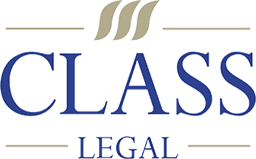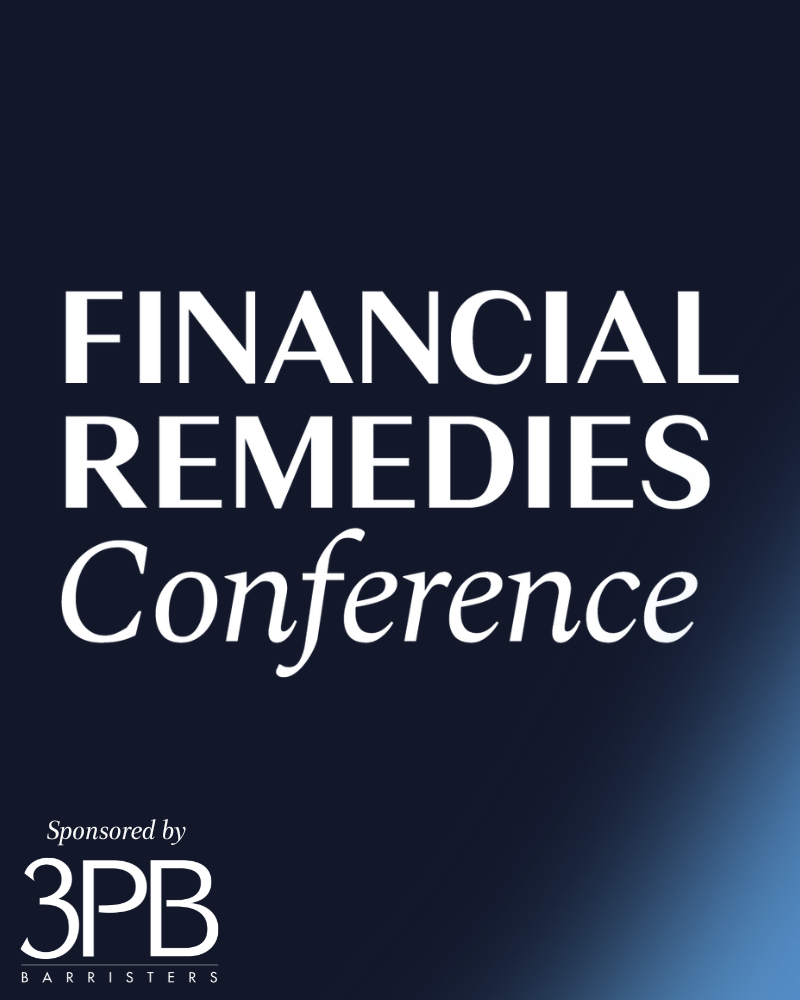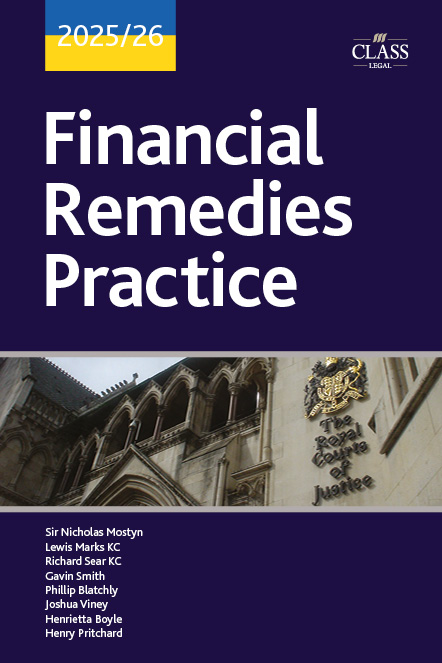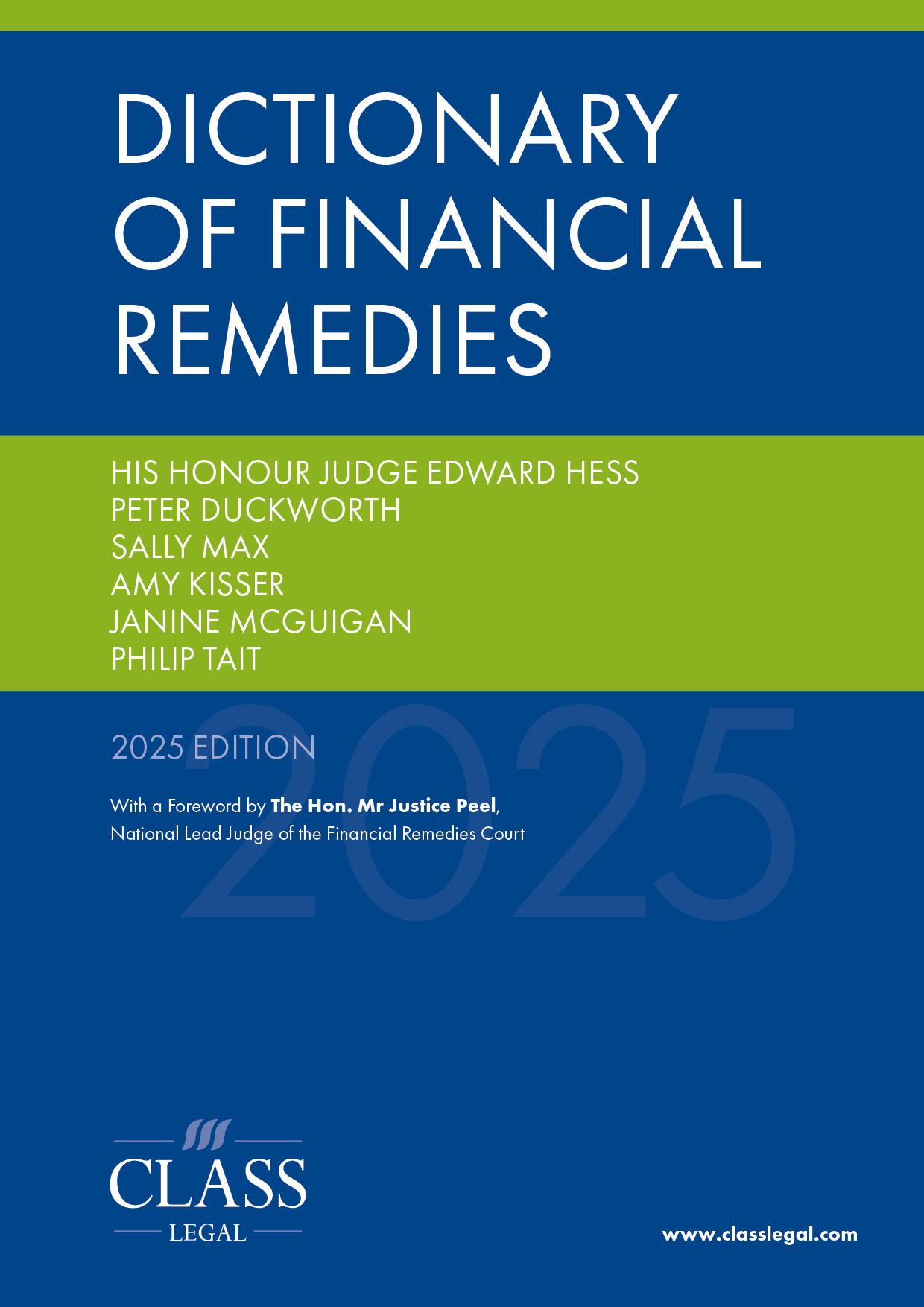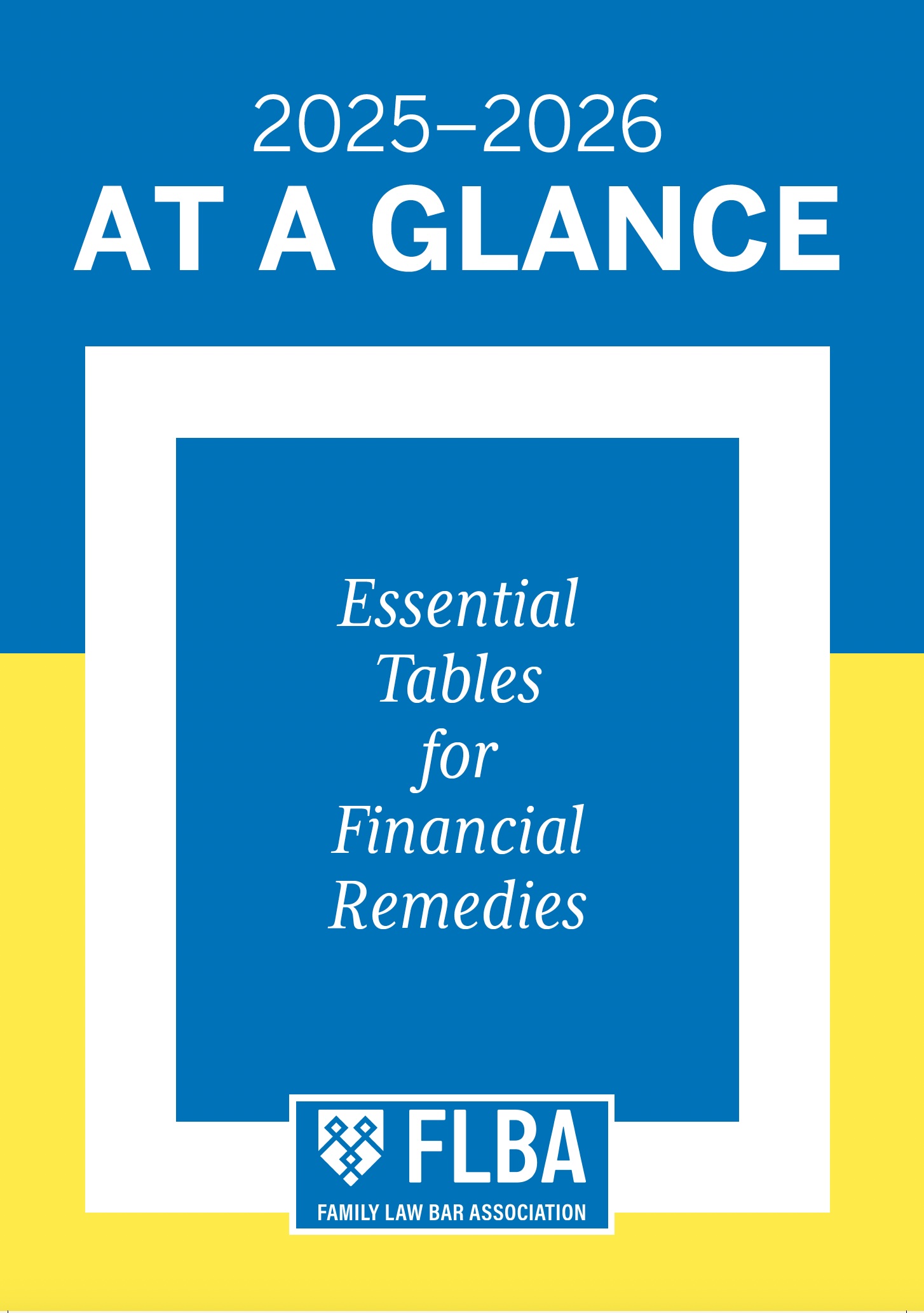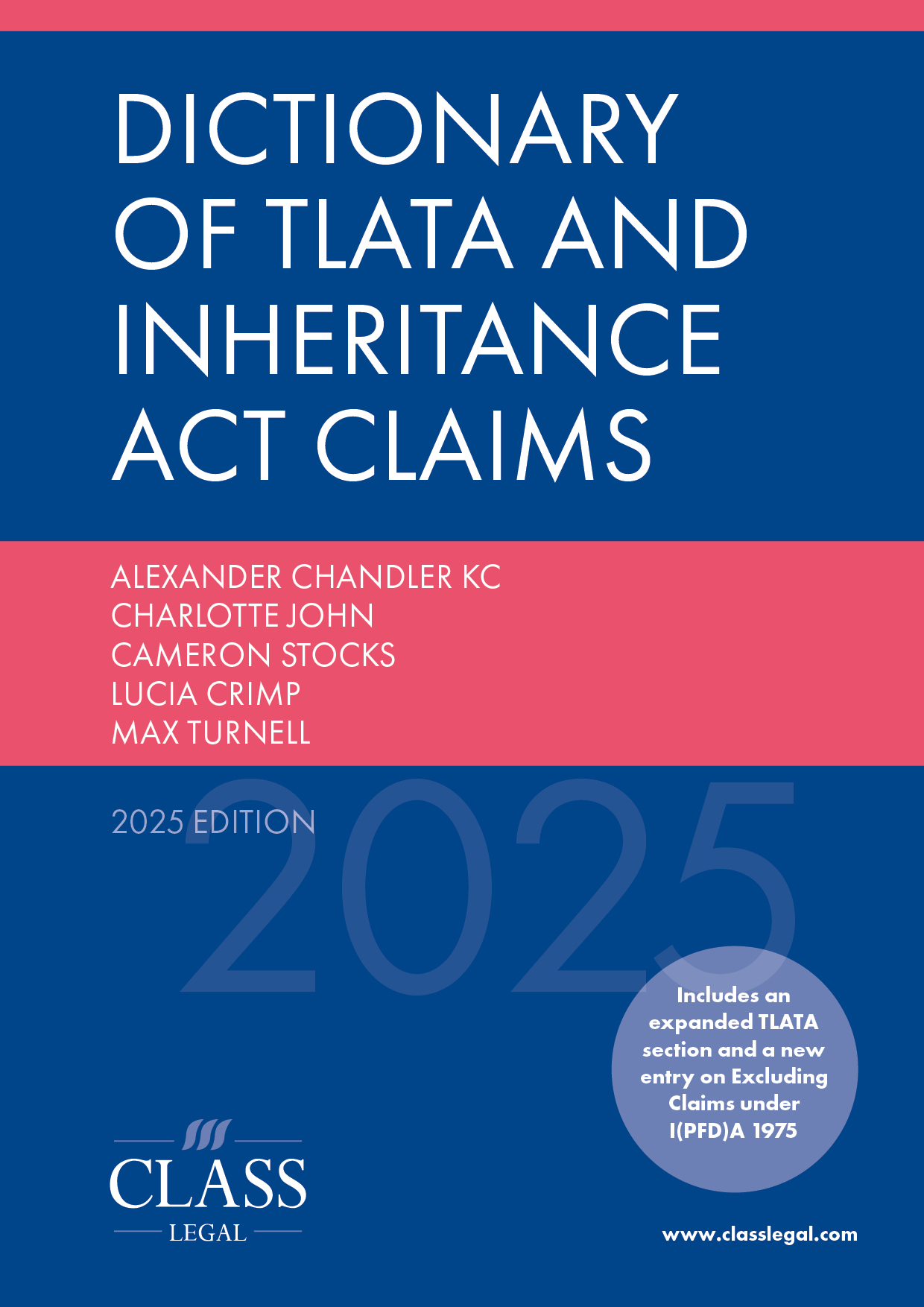
When It’s Good, It’s Very Good… The ES2, Aged Three; a Pedant’s Perspective
Published: 11/04/2025 07:00

On 11 January 2025, the pro forma schedule of assets known to all as the ES2 turned three years old. Just like the little girl (with the little curl, right in the middle of her forehead) of nursery rhyme fame, who one imagines may be of a similar age, when it’s good, it’s very good, and when it’s bad, it’s horrid.
In the three years since it was delivered into the world, it has revealed to many of us the limits of our Excel literacy and, sadly, demonstrated that just occasionally, in the very hardest fought of our cases, we and our opponents can’t even agree to disagree respectfully. At the same time, however, it has shown what is achievable when opposing parties work together effectively, without any point scoring, to narrow issues and to depict the lie of the financial landscape, fully and clearly, simply and neutrally, enabling the court to identify points of dispute (as to computation, at least) both quickly and easily.
Paragraphs 11b, 13b and 21b of the Statement on the Efficient Conduct of Financial Remedy Hearings Proceeding in the Financial Remedies Court Below High Court Judge Level (the ‘Efficiency Statement’ or ‘ES’), published on 11 January 2022, by Mostyn J, then Lead Judge of the Financial Remedies Court, and HHJ Hess, Deputy Lead Judge, provide that ‘unless wholly impractical’, ‘a composite schedule of assets and income … using Template ES2 on which any unagreed items must be clearly denoted’ must be filed ahead of every first appointment, financial dispute resolution appointment and final hearing.
The template is by no means perfect. Some inveterate pedants doubtless still lose sleep ruminating over the inclusion of the mysterious single-pixel column D or the curious variation in width as between columns F and G, I and J, L and M. Others may wonder why the ‘joint’ column isn’t in the middle or why there isn’t fuller consistency in the use of nomenclature as between Applicant and Respondent, Husband and Wife, or the reflection of necessary deductions for likely future capital gains tax liabilities, as between real property, company shareholdings and other assets. I have heard it said that some take particular exception to the use of a serif font (although that is not a hill on which I am inclined to die; my pedantry – or ‘eye for detail’, as I prefer to call it – knows some bounds). For the most part, however, problems with the end product stem not from the quality of the template but the way that it is used.
Separate guidance prepared by the Family Law Bar Association’s ‘Money and Property’ sub-committee, who designed the template, sets out in detail how it is intended to be completed. That guidance was published on 1 February 2022, three weeks after the Efficiency Statement, and in response to ‘some teething problems, and in some instances a misunderstanding as to how it should be compiled and used’. It appears to have been overlooked by some.
It can still be found on the judiciary.uk website, together with an advisory notice issued by Mostyn J and HHJ Hess recording that they were ‘happy to endorse’ the guidance, which they considered to be ‘sensible and helpful’. Their concluding observation, that the guidance ‘should be followed unless it is impractical not to do so’ offers light relief and reassurance that even such legal luminaries are capable of an occasional typographical error.
Notably, the FLBA guidance provides as follows:
‘[2] The purpose of the ES2 is to record the assets, liabilities, and income values in a simple and neutral format, and in such a way as to enable any differences in the values asserted by the parties to be highlighted and identified easily by the court …
[4] The ES2 has been designed so that the values for assets, liabilities, and incomes which populate the ES2 do not have to be agreed between the parties before the document is lodged.
[5] The parties do not need to agree or approve the numbers which [the] other party chooses to assert in their allotted side of the three columns, nor should a party attempt to populate the parts which are reserved for the other party’s case.
[6] Each party must set out, on “their” side of all three columns, the numerical values that they contend for all of the individual assets/liabilities in the case, including those of the other party and those which are held jointly. Values on both sides of the three columns should be populated, even where the parties are using the same figure.
[7] Where the figures ascribed by the parties for any individual item are different (save for figures which are less than £50 apart), the parties must highlight (in yellow) the two adjacent cells with competing values …
[11] The format of the ES2 has been designed to prevent disagreements about the way resources should be presented (for example due to arguments about beneficial ownership, illiquidity, non-matrimonial character, relevance, or ‘soft’ debts). Advocates will present such arguments, by reference to the ES2, in their submissions to the court and in any additional schedules which form part of their position statements.
[12] Where there is a dispute about whether an asset exists or whether it should be included in the ES2 at all, it should nevertheless be recorded in the ES2. The party disputing inclusion will leave a blank cell for the value of the asset and the competing adjacent cells must be highlighted in yellow, denoting the dispute.
[13] If an asset is legally owned by a third party, but it is asserted that one (or both) of the parties has a beneficial interest in it, it must therefore be recorded in the ES2. The party denying the beneficial interest will leave the value cells blank and the cells will be highlighted in yellow to denote the dispute.’
According to the guidance, therefore, the starting point is that generally each figure in the schedule should be one half of a pair, with a counterpart which might or might not be its exact mirror image, or, to put it another way, one of a pair of twins, which may be identical or non-identical. Cells ought never to be left blank, except where that is done consciously and deliberately to indicate a dispute as to e.g. the existence of a given asset or whether either or both of the parties have a beneficial interest in it. Bright yellow colouring should be used for the purposes of highlighting material disputes as to value (differences of £50+) and only for those purposes; any highlighted cell should always be one of a pair.
Notwithstanding their clarity and simplicity, even after three years, one routinely encounters schedules which do not follow those simple rules.
However, even if they are followed to the letter, the ES2 can sometimes leave something to be desired; generally not so much that the use of the template could properly be said to be ‘wholly impractical’, but nevertheless something. That begs the question: how else might the presentation of any given ES2 be improved?
Although it gives rise to the need for the formulae with which certain cells have been pre-populated to be carefully checked and amended, it is suggested that removing from the template those cells or sections which are irrelevant or immaterial in a particular case (e.g. ‘business interests’ where there are none or ‘chattels’ where their values are of no consequence) can do much to improve the brevity, clarity and usefulness of the schedule, and make it far easier to reproduce on a single ‘portrait’ page as part of a PD 27A compliant bundle.
Generally, the ‘agreed comments’ column, it is suggested, might be best used only very sparingly indeed. One golden rule of form filling is that the size of any given box probably offers a reasonable indication as to the amount of information intended to be inserted into it. Column N is clearly not the place for lengthy (and often competing) narratives, but rather, it is suggested, pithy one-liners such as ‘W’s figure gross, H’s figure net’, ‘H’s figure per para X of SJE’s report, W’s figure per para Y’, ‘W’s figure per Form E, H’s figure per updating’ or, where there is a dispute about the allowance to be made for (notional) costs of sale of real property, notwithstanding that the template has pre-configured to allow for -3%, ‘H allows -3%, W allows -2%’. If a given comment cannot be accommodated without enlarging the cell then it is probably too long.
As paragraph 11 of the FLBA’s guidance makes clear, the expectation is that:
‘[a]dvocates will present … arguments about beneficial ownership, illiquidity, non-matrimonial character, relevance, or ‘soft’ debts … for example … by reference to the ES2, in their submissions to the court and in any additional schedules which form part of their position statements.’
In other words, the ‘agreed comments’ column of the schedule of assets is not the proper place in which to adumbrate any such arguments.
Perhaps surprisingly, given that the most important figures in any given case are almost always the total net capital asset value and the total pension asset value, and perhaps also the aggregate of the two (according to each party’s case, insofar as they may differ), neither actually appears on the face of an unmodified ES2. In that regard, the FLBA’s guidance provides as follows:
‘[10] It is acceptable, if the parties consider it helpful, to add additional calculation boxes into the ES2 which calculate the totality of the combined resources of the parties. These calculations must show the combined total of the values asserted by each party …’
On the face of it, it is suggested, it will almost always be helpful to do so and, indeed, the example ES2 appended to the guidance (referring to the matter of Sample v Sample) did precisely that. If ever the template is to be revised and updated, based on practitioners’ experience of using the current version, then this is surely the single most useful addition that could be made.

